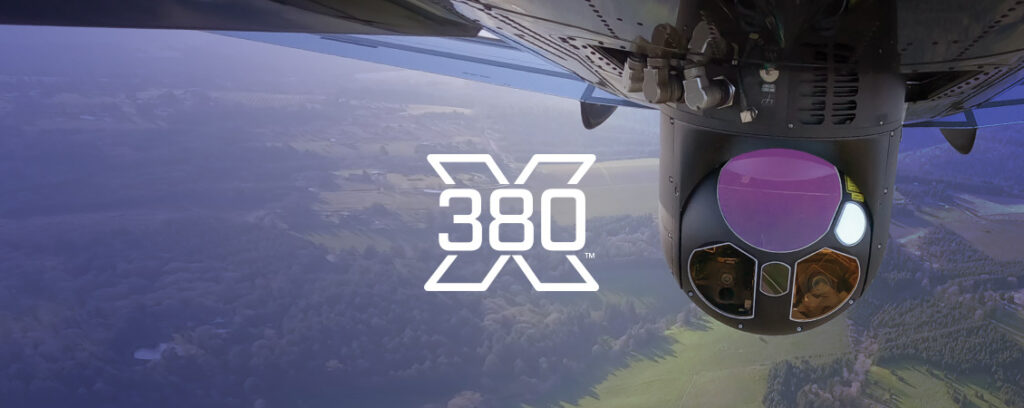By Larry Krieg, Director of Sales, Teledyne FLIR
Airborne surveillance missions span a wide range of activities, from search and rescue and high-speed pursuit, to maritime patrols and fighting wildfires. Regardless of the environment, operators still have an overriding need to ‘see’ more (but without data overload) and act faster. As technology grows, operators expect their EO/IR systems to push the envelope in terms of image clarity, target tracking, and more, in order to save lives and protect communities.
How can operators do more and expedite critical decisions without encountering information overload? It was important to our customers that Teledyne FLIR Defense provide a path forward for them to adapt new technology without replacing their legacy 380 series equipment.
That’s where the new Star SAFIRE® 380X comes in.
The 380X provides advanced image aiding capabilities in a single LRU and is available in our Star SAFIRE 380-HD and 380-HDc systems. These intelligent imaging features are also available as a hardware, firmware, and software upgrade to an existing 380-HD or 380-HDc system. Its impressive enhancements reduce operator workload and boost visibility for faster, and smarter, critical-decision making.
Some of the key advanced imaging capabilities the 380X provides operators include:
- Better Clarity: Operators can see more details with the 380X’s de-scintillation filter that removes atmospheric effects to reveal fine details otherwise hard to detect—such as deciphering objects on the ground or details on a building
- Multiple Video Management: This feature allows operators to view multiple video sources simultaneously, including all camera payloads, plus external video input—for example, allowing the air unit to have a live-feed of a secondary visual from a drone
- New User Interface: Operators can now navigate menus with customizable icon-based graphics to expedite inputs when needed
- Improved Targeting: The 380X enhancement has a Moving Target Indicator (MTI) which helps identify threats earlier and more definitively, alongside advanced auto tracking (AAT)

The 380X builds upon the pedigree of our Star SAFIRE gimbal systems, which for years have provided superior image stabilization and ultra-long-range imaging performance for intelligence, surveillance and reconnaissance (ISR), law enforcement (LE), search and rescue (SAR), border patrol, maritime patrol, force protection, and airborne firefighting missions.
For airborne firefighting, being able to see through smoke is critical. The InfraRed (IR) sensor of the 380X allows operators to see what smoke typically obscures in an EO payload. Observing fires moving in real-time from the air can be the difference when it comes to directing ground firefighters – who need to get into the incident, and leadership – who need data to make real-time decisions. In addition to IR, the Short-Wave InfraRed (SWIR) sensor not only sees through smoke but minimizes the “blooming” that can occur close to flames with even a standard IR sensor due to the excessive heat present.
Our de-scintillation filter also removes atmospheric obscurants adding additional clarity and resolution to the sensor. The system also integrates perfectly with airborne moving map and ARS systems to generate fire maps. Fire lines can be traced through smoke at a safe distance and downlinked to incident command instantly for real-time actionable information.
The combination of standard IR and SWIR of the 380X, with long-range optics delivers the ideal combination for the most efficient and effective airborne firefighting mission.
Whatever the mission, whatever the environment, airborne surveillance teams continue to depend on the advanced capabilities of Teledyne FLIR Defense imaging systems to help them cut through the noise, sharpen their focus, and expedite decision-making that can often save lives—and we remain committed to their missions, and everyone in the air, and on the ground, each day.


